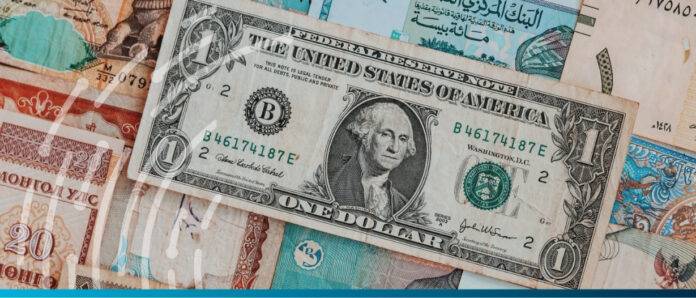The return of Donald Trump to the White House has sent ripples of instability through global currency markets, as the newly elected president threatens sweeping tariffs against major trading partners. Trump’s threat of implementing tariffs of up to 25% on Canadian and Mexican imports has sparked uncertainty and volatility in the markets.
In response to Trump’s actions, the US dollar has experienced fluctuations, falling between 0.5% and 1.5% against G10 currencies. Despite this, the US dollar index has remained relatively steady around 108.00. China’s offshore renminbi also weakened by 0.25% following Trump’s announcement of a possible 10% tariff related to fentanyl trafficking, leading to a 1% drop in the CSI 300 index. However, Beijing’s measured response and Trump’s initial softer approach have raised hopes for potential negotiations.
The pound sterling faced challenges against a strengthening dollar, trading near 1.24. The UK’s weakening labor market has increased expectations of a February rate cut by the Bank of England to 4.5%. On the other hand, the euro emerged as a surprise outperformer, surging 1.5% against the dollar on Monday, January 21.
The Australian dollar has remained vulnerable to Trump’s trade rhetoric, hovering around 0.63 against the US dollar. Expectations of a rate cut from the Reserve Bank of Australia have added pressure on the currency, with its movements closely linked to developments in US-China trade relations.
The Indian rupee has shown marked volatility, trading between 86.20 and 86.80 against the dollar. Trump’s trade policies have exacerbated existing pressures on emerging market currencies, with foreign investors withdrawing over $7 billion from Indian markets this month. However, domestic factors such as upcoming budget allocations may provide some support for the currency.
The Japanese yen retreated from a one-month high against the dollar, trading above 155.50. Market sentiment has been balanced between Trump’s trade threats and expectations of an imminent rate hike by the Bank of Japan. If trade tensions escalate, the yen’s ‘safe-haven’ appeal could strengthen, despite the current risk-positive market sentiment.
Trump’s trade policies may limit the Federal Reserve to just one more rate cut, potentially bringing some stability to the dollar against major currencies. However, the ongoing threat of escalating trade tensions continues to loom over global currency markets, creating uncertainty and volatility for traders and investors alike.
Overall, the impact of Trump’s trade policies on global currency markets remains uncertain, with the potential for further fluctuations and challenges ahead. Market participants will need to closely monitor developments and adapt their strategies accordingly to navigate the changing landscape.




